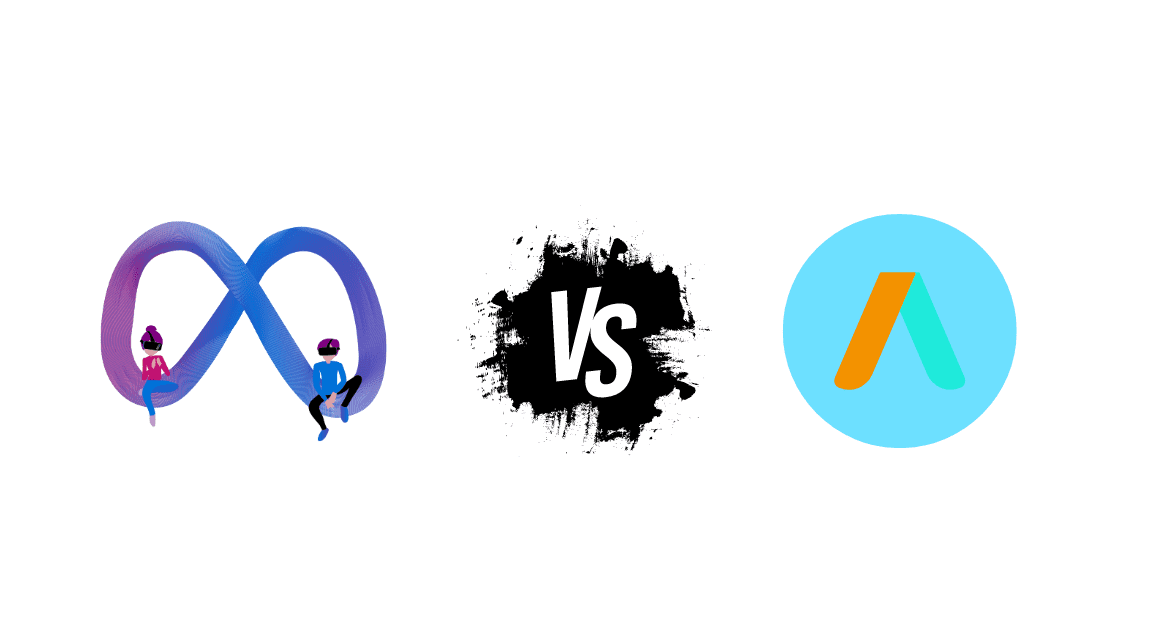In the dynamic world of digital advertising, choosing the right platform can make all the difference in achieving your marketing goals. Two of the most prominent platforms are Google Ads and Meta Ads, each with unique capabilities and advantages. This blog post delves into the distinctions between Meta Ads and Google Ads, helping you understand which platform might best fit your business’s needs.
Meta Ads vs Google Ads: Understanding the Core Differences
Google Ads are primarily intent-based, targeting users based on their search keywords, which indicate their immediate needs or interests. In contrast, Meta Ads, which encompass advertising on platforms like Facebook and Instagram, are behavior-based, utilizing user demographic and behavioral data to target ads broadly.
Google Ads excels at capturing user intent, a crucial advantage for businesses aiming to connect with customers when they are ready to make a decision or purchase. This platform uses sophisticated algorithms to match your ads with the precise search queries users enter, making them highly relevant to their immediate needs or interests.
Targeting Precision
The core strength of Google Ads lies in its ability to target ads based on the keywords and phrases users type into the search engine. This targeting precision ensures that your ads are displayed to users who are already interested in your offer, significantly increasing the likelihood of engagement and conversion.
By focusing on keywords that indicate high buying intent, you can effectively intercept potential customers at the crucial decision-making point in their buying journey.
Diverse Ad Formats
Google Ads offers a wide array of ad formats, each designed to cater to different aspects of the customer acquisition process:
- Text Ads: These are the most common type of Google Ads and appear directly in search results, offering immediate visibility to users searching for related terms.
- Image Ads: These appear on websites within the Google Display Network, allowing for more visually engaging presentations of your products or services.
- Video Ads: Deployed on platforms like YouTube, these ads leverage the power of video storytelling to engage potential customers dynamically.
- Shopping Ads: These provide users with direct product information, including prices and images, right in the search results, making them perfect for e-commerce retailers.
Each format can be used at different marketing funnel stages, from raising awareness with video ads to driving purchases with shopping ads.
Measurability and Optimization
One of the most significant benefits of using Google Ads is its robust measurability. The platform provides detailed analytics that tracks various metrics, from impressions and clicks to conversions and ROI. This data is vital for understanding the effectiveness of your campaigns and making informed decisions to optimize performance.
For example, you can adjust bids, refine targeting, or tweak ad copy based on which ads perform best. This level of control and insight allows businesses to continuously improve their ad strategies and maximize returns on their advertising spend.
Behavior-Based Advertising with Meta Ads
Meta Ads excels in utilizing the extensive database of user behaviors, interests, and demographic details available across platforms like Facebook and Instagram. This wealth of information allows advertisers to craft highly detailed audience profiles, resulting in personalized ad experiences that resonate well with potential customers.
Advanced Targeting Options
Meta Ads provide sophisticated targeting tools for segmentation based on detailed criteria such as user behaviors, liked pages, interactions with specific content, and even purchase history. This enables advertisers to create highly relevant ads for each user, increasing the likelihood of engagement.
Visual Impact and Engagement
The inherently visual nature of Meta’s platforms makes them ideal for ads that rely on images and videos to attract attention. This is complemented by the ability to integrate seamlessly with social features, encouraging users to interact directly with the ads through likes, comments, and shares. Such interactions not only enhance engagement but also increase the visibility of your ads through organic social spread.
Dynamic Ad Capabilities
Meta supports dynamic ads, which adjust their content automatically based on the user’s past interactions, such as items they’ve viewed on a website but haven’t purchased. This personalized approach effectively captures user interest by reminding them of their previous engagements with your brand, enhancing the chances of conversion.

Evaluating Your Business Needs
Choosing between Meta Ads and Google Ads often depends on your immediate business objectives:
| Objective | Best Platform |
|---|---|
| Immediate Conversions | Google Ads |
| Brand Awareness | Meta Ads |
| Engaging Visual Content | Meta Ads |
| Targeting High-Intent Keywords | Google Ads |
Integrating Meta Ads and Google Ads
While understanding the distinctions between Meta Ads vs. Google Ads is crucial for targeting specific objectives, the integration of both platforms can often enhance the overall effectiveness of your digital marketing strategy. This synergistic approach allows businesses to leverage each platform’s unique strengths, ensuring a more comprehensive reach across different customer journey stages.
How Meta Ads and Google Ads Complement Each Other
Google Ads excel at capturing high-intent users who are actively searching for products or services. This makes them particularly effective for driving direct actions like purchases or sign-ups. On the other hand, meta ads are superb at creating initial awareness and engagement, which is crucial for long-term brand loyalty and customer relationship building.
Combining these platforms allows you to effectively guide potential customers from the awareness stage to the conversion phase.
- Creating Awareness with Meta Ads: Use Meta Ads to introduce your brand to a broad audience. Utilize the wealthy demographic and psychographic targeting options to tailor your message to the ideal customer profile. Engaging visuals and compelling storytelling can help create a memorable first impression, piquing interest and fostering brand recognition.
- Capturing Intent with Google Ads: As potential customers become aware of your brand and start considering your products or services, Google Ads can capture this growing interest.
Both Google Ads and Meta Ads offer significant benefits, and choosing between them should align with your marketing strategy and goals. Whether you’re looking to drive immediate sales or increase brand recognition, understanding these platforms’ unique attributes will enable you to allocate your advertising budget more effectively.
Are you ready to optimize your advertising strategy but unsure on Meta Ads vs. Google Ads? Contact us today for expert advice tailored to your business needs, and let us help you maximize your digital marketing efforts with the right advertising platform.


